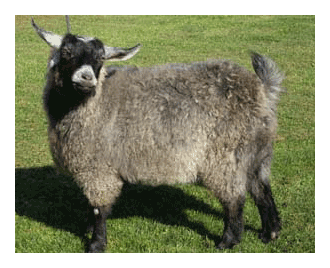 Modern technology has allowed for many different types of man-made materials and fibers to be engineered on a factory floor, but the truth is that nothing beats the feel and pure luxury of a natural material. Pygora fiber is fast becoming one of the most popular fabrics on the market, especially since it is a very versatile material that can be used for all manner of items. Pygora may sound as though it is something that is man-made, and on some level it actually is. In this case it’s actually woman-made, and that is down to Katharine Jorgensen whose idea it was to cross breed pygmy and angora goats to create a new breed called the pygora. The result was a beautiful little animal that produces a color diverse longhair fleece that is a dream come true for those in the crafts and fiber trade.
Modern technology has allowed for many different types of man-made materials and fibers to be engineered on a factory floor, but the truth is that nothing beats the feel and pure luxury of a natural material. Pygora fiber is fast becoming one of the most popular fabrics on the market, especially since it is a very versatile material that can be used for all manner of items. Pygora may sound as though it is something that is man-made, and on some level it actually is. In this case it’s actually woman-made, and that is down to Katharine Jorgensen whose idea it was to cross breed pygmy and angora goats to create a new breed called the pygora. The result was a beautiful little animal that produces a color diverse longhair fleece that is a dream come true for those in the crafts and fiber trade.
In order for a pygora goat to be recognized as a purebred it must contain no more than 75% of either the angora or pygmy parent, which in turn means that there can be some differences in the fleeces that are produced in the offspring. In order to help classify the fleece type, the Pygora Breeders Association (PBA) has split them into three different types.
- Type A is the longest of the three and usually comes in at over 6 inches in length. It is also characterized by long ringlets which are booth smooth and silky whilst also being cool to the touch.
- Type B falls in the 3 to 6 inch range in regards length and presents characteristics that are consistent with both cashmere and mohair. There is usually a two tone style of color to the type B, with the guard hair normally a darker shade than the main fleece.
- Type C is a very short haired variety, and usually comes in between 1 and 3 inches. This type of fleece is most commonly used in the production of cashmere, with the color generally being a little lighter than that of the guard hair.
The separation of types is strictly for classification purposes only and is not an indication of the quality of the fleece, as all 3 tend to be exactly the same, albeit with markedly different characteristics. The three different types have different levels of guard hair, all of which has to be completely removed before the spinning process can take place. That makes Type A somewhat easier to work with as it tends to come with little or none of the coarse guard hair attached.
Whatever type is chosen, the fiber that is produced is always of the fine, soft variety which makes it perfect for even the most delicate of clothing items. The comfort and warmth provided by the pygora fabric is ideal for baby clothes and blankets, as the fine material is ideally suited for their soft skin. That is only the beginning of the uses for pygora fabric though, and the next time you feel a blanket, shawl or sweater and marvel at how soft and beautiful it feels, it may just be thanks to the pygora goat.


